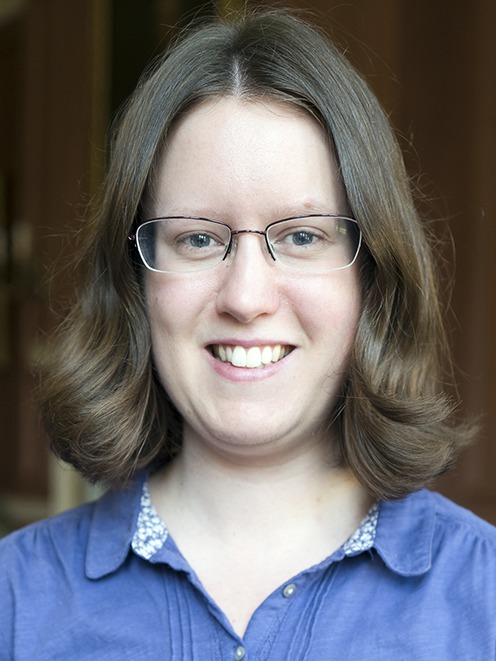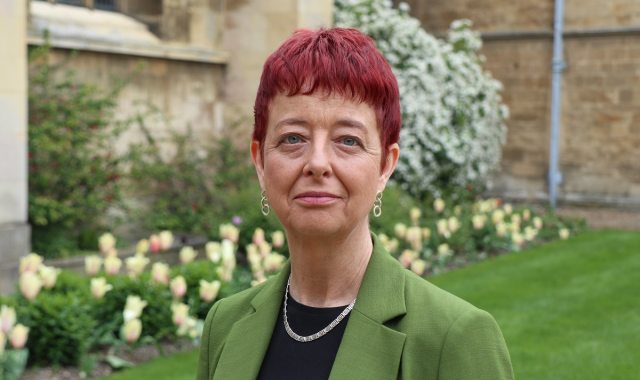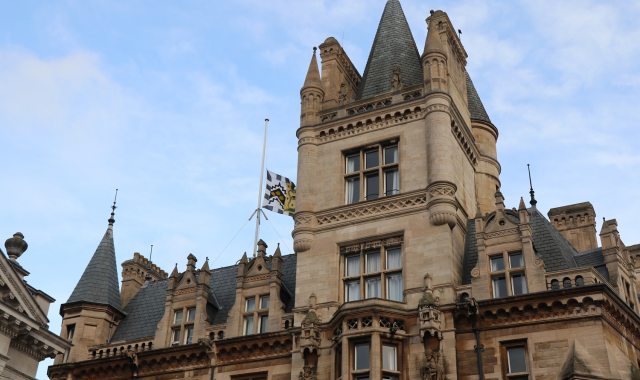Deciphering Linear B - Caian tells the story of a 3000-year-old linguistic mystery
- 08 November 2017
- 5 minutes
Sixty-five years ago this year, one of the world’s greatest linguistic mysteries was solved. An ancient script called Linear B, inscribed on thousands of clay tablets found in Crete and southern Greece, was finally deciphered, over half a century after the first tablets were excavated. The words in the 3000-year-old clay were written in what remains the oldest readable script in Europe, and shed new light on a little-understood period in classical history centuries before the time of Homer.
 The dramatic decipherment of Linear B is being marked with a new exhibition at Cambridge’s Fitzwilliam Museum, with help from university academics including Caius Research Fellow Dr Anna Judson. Dr Judson, a Classicist and Linear B specialist, has written part of the exhibition’s catalogue, as well as devising an interactive exhibit showing visitors how to read the mysterious script.
The dramatic decipherment of Linear B is being marked with a new exhibition at Cambridge’s Fitzwilliam Museum, with help from university academics including Caius Research Fellow Dr Anna Judson. Dr Judson, a Classicist and Linear B specialist, has written part of the exhibition’s catalogue, as well as devising an interactive exhibit showing visitors how to read the mysterious script.
The Codebreakers and Groundbreakers exhibition, which also explores the breaking of the Enigma Code at Bletchley Park, begins with the original discovery of the Linear B tablets by the British archaeologist Arthur Evans in the Cretan palace of Knossos in 1900. More tablets featuring the same script were found at mainland classical sites such as Mycenae and Pylos, but for decades scholars were unable to crack the code behind the inscribed writing since neither the script nor its language was known. Alice Kober, an American scholar, made the important discovery that the language was inflected – its words were composed of roots and endings whose patterns could be identified – but it was not until 1952 that Michael Ventris, a young British architect, made a key breakthrough.
Surmising that words that appeared to be place names on the tablets would be similar to their names in later Classical Greek, Ventris at last had a match for some Linear B characters and the syllables they represented. Building on Kober’s work, he could begin patiently to fit the characters into a grid showing which signs shared similar values, almost as a Sudoku player gradually fills in numbers.
As the grid filled up, Ventris had his eureka moment. The language emerging from the script was not, as he had thought, some form of Cretan “Minoan" language based on Etruscan, but was instead an early and previously unknown form of pre-Classical Greek.
Visitors to the Fitzwilliam exhibition can listen to the radio recording in which Ventris announced his startling discovery on the BBC’s Third Programme in July 1952. “He talks about the whole background,” says Dr Judson, “and then very calmly he says: ‘Over the last few weeks I have suddenly come to the conclusion that the Knossos and Pylos tablets must, after all be written in Greek’.” It was, said Ventris, “a difficult and archaic Greek, seeing that it’s 500 years older than Homer… but Greek nevertheless”.
With the code cracked, the content of the tablets – some of which are on display in the Fitzwilliam - could finally be revealed. Collaborating now with John Chadwick, a newly-appointed Classics lecturer at the University of Cambridge and a former code-breaker at Bletchley Park, Ventris set to work on translation. As scholars had already concluded, the inscriptions were not literary but turned out to be administrative documents: an array of lists and inventories throwing fascinating new light on life in the palaces of pre-Classical Greece. One tablet records the name of women and children in the palace (one woman’s name is ‘Wordieia’, the Greek form of Rosie), while others set out lists of animals or inventories of objects such as pottery, tripods and cooking vessels.
“They are everyday post-it notes,” says Dr Judson. “Some are pretty boring in a way: there are lists of storage vessels, animals, this person has that many sheep. But you also see arrangements for festivals – one of the tablets at Pylos shows a feast is going to happen because such and such a person has been appointed to a post and someone has to go and check the vessels in the storerooms.”
Visitors to the new exhibition can use Dr Judson’s touch screen interactive display to explore four of the tablets and their script – a mix of around 90 syllabic signs and over 100 ideograms – non-phonetic pictures symbolising objects such as animals.
The fascination of the Linear B story, Dr Judson says, lies partly in the notion of decipherment: “It’s a great story of these mysterious symbols being discovered that no one could read for 50 years. Then suddenly, we have this window we didn’t have before on a society that really is quite different from what we knew about early Greece.”
During her own research, she has been able to handle some of the tablets directly. “On the actual tablets, which are more than 3000 years old, you can see the paIm prints of the person who made them. I was in the archaeological museum in Athens and I could put my hand into the impressions of four finger prints. I had to pause for a moment and just think about that connection. This is about people in the end, people who were making clothes, eating food, looking after animals.”
Dr Judson’s work at Cambridge focuses on the scribes who inscribed the tablets, examining handwriting and spelling to identify different writers and explore questions such as how they were trained to write. Her research, mainly focusing on the Pylos tablets, also examines why the spelling of the same word varies even in the hand of one individual scribe.
The work requires not only linguistic study but collaboration with archaeologists and others to help interpret the 3000-year-old world illuminated by the tablets. “You can look at a text as a purely linguistic document, but the real interest as far as I am concerned is the people behind the writing.”
People, for instance, like the men referred to in the tablet whose image illustrates this article (reproduced by kind permission of the Fitzwilliam museum). This Linear B tablet, from the palace of Knossos on Crete, records that an official called Kuprios has issued of a large quantity of coriander to a man named Twinon, probably for use in scenting perfumed oil.
- The Codebreakers and Groundbreakers exhibition, exploring the deciphering both of Linear B and of the Enigma Code, is open now, and runs at the Fitzwilliam Museum until Sunday 4 February 2018. Entry is free.
- A parallel exhibition run by the Cambridge Classics Faculty is now open at the Museum of Classical Archaeology. It runs until Saturday 3 February and is free.
- You can read blogposts by Dr Judson on the two exhibitions here:
https://itsallgreektoanna.wordpress.com/2017/10/26/codebreakers-and-gro…
https://itsallgreektoanna.wordpress.com/2017/10/27/more-codebreakers-an…


